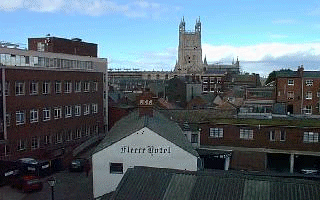 |
| Wheatstne
return |
| Chronology |
| Scientists index |
| Bibliography |
|
| ||||
Charles Wheatstone | ||||
| Gloucester
1802-Paris
1875 | ||||
| |
Biographical
notes | |||
| Experimenter
English, was committed by a merchant of musical instruments until the
publication in 1823, curious experiences on the sound. It also
interested resonance column of air, the transmission of sound in solid
conductors and linear (1831) and built a machine speaker.
In 1834 he was appointed professor at King's College, London, but leaves the chair  after a few years. In 1834 publish its experiences in the electrical
field. In 1837 he exhibited in the Quarterly Journal of Science
the experiences on sound and the description of an ingenious
device, the noise calendoscopio becoming the first source for the
optical sound. Year following the stereoscope invented, perfected by
Brewster. In February 1838 in London he filed the
patent of
telegraph, after dedicating his improvement and possible applications.
Finally in 1869 invented a device used to measure with precision the
resistance known as "BRIDGE OF WHEATSTONE".
after a few years. In 1834 publish its experiences in the electrical
field. In 1837 he exhibited in the Quarterly Journal of Science
the experiences on sound and the description of an ingenious
device, the noise calendoscopio becoming the first source for the
optical sound. Year following the stereoscope invented, perfected by
Brewster. In February 1838 in London he filed the
patent of
telegraph, after dedicating his improvement and possible applications.
Finally in 1869 invented a device used to measure with precision the
resistance known as "BRIDGE OF WHEATSTONE". |
| |||
Biographical
notes from
(from site Gloucester
History) | ||||
Charles
Wheatstone was born above his family's shop at 52/54 West gate Street
and at the age of 14 was apprenticed to his uncle, a musical instrument
maker in London. Charles became fascinated with the physics of both sound and electricity, and having invented the concertina in 1829 went on to perfect a stereoscope for viewing photographs ( which became invaluable for 20th Century aerial reconnaissance ) and devices for measuring the speed of electricity and light. In 1834 he became Professor of experimental physics at Kings College London, and in 1837 - along with William Cooke - developed the electric telegraph. This was first used to control trains between Euston station and Chalk Farm in London. He was later knighted by Queen Victoria for his work on the first transatlantic telegraph cable. He is also remembered for the Wheatstone bridge - used to measure electrical resistance - and the " Magic Harp " which inspired Alexander Graham Bell to invent the telephone. |
||||
| |